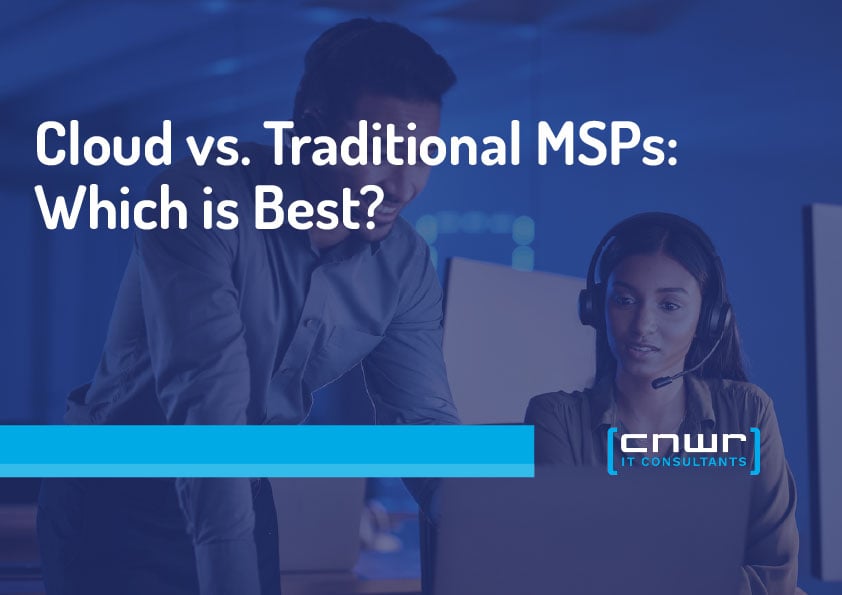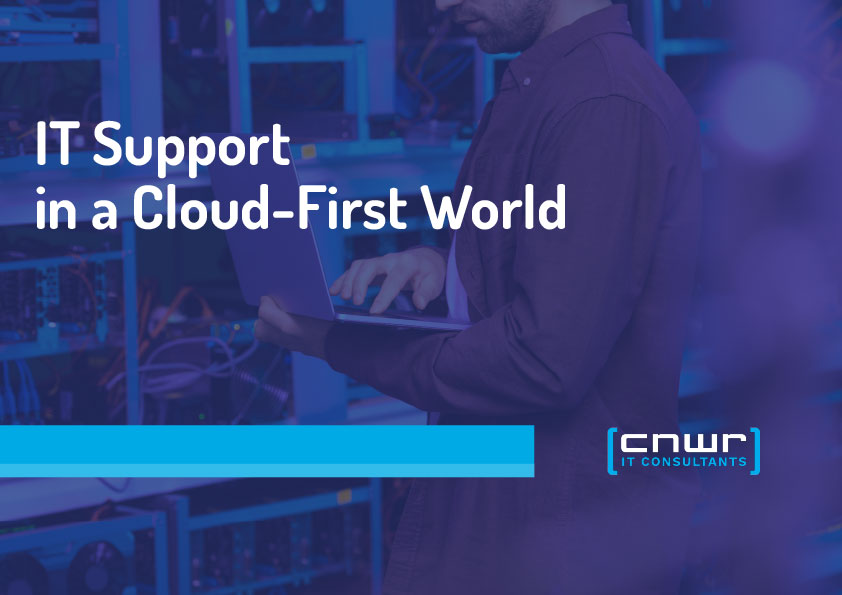Every so often, a business leader mutters, “We should talk to an MSP,” without really knowing if they'll end up with better sleep…or just a bigger bill. If IT support feels like a labyrinth guarded by fire-breathing dragons (with hourly billing), you’re not alone. Choosing between Cloud Managed IT Services and Traditional Managed Service Providers (MSPs) is less about tech jargon and more about how you want your business to run tomorrow afternoon when your server coughs up an error.
Whether your idea of “the cloud” is futuristic computing or next week’s weather forecast, this post will make the difference clear (and dare we say, mildly entertaining). By the end, you’ll know the pros, cons, hidden gotchas, and who you can trust to keep your business humming.
What Are Cloud-Managed IT Services and Traditional MSPs?
Managed IT Services 101
Let’s start with the basics: a Managed Service Provider (MSP) is a third-party company that keeps your tech humming. That includes everything from managing your printer network and backing up your data to patching security updates and helping Karen in HR recover from her latest sketchy screensaver download.
- Traditional MSPs have long focused on on-site support. When hardware breaks, they fix it. When networks go down, they troubleshoot. They’re the hands-on, roll-up-your-sleeves type—reliable and essential, especially for businesses with on-prem infrastructure. Their approach tends to be reactive, jumping in to resolve issues as they happen. Think of them as your neighborhood mechanic: they know your systems inside out, and they’re there when you need them.
- Cloud Managed IT Services shift much of that support off-site. These providers leverage platforms like AWS, Azure, and Google Cloud to monitor, manage, and secure systems remotely. Instead of waiting for something to break, they use automation, analytics, and 24/7 monitoring to address issues before users even notice them. It’s a more proactive model—think digital air traffic control, where prevention is the name of the game.
Key Differences: Traditional MSP vs. Cloud-Managed IT Services
If traditional MSPs are the “call us when it’s broken” crew, cloud-managed IT services are more like, “We fixed it before you even got the alert.” Both models bring value, but how they deliver it can look very different. Here’s how they stack up
Cost and Billing Structure
- Traditional MSPs often follow a pay-as-you-go or project-based model. When something breaks, you call them in, and you pay for the fix—sort of like tech insurance… just without the deductible forgiveness.
- Cloud Managed IT Services lean toward predictable monthly pricing. Think of it as a “tech subscription” where the surprise charges are rare, and the binge-watching is replaced by proactive monitoring.
Service Model and Response
- Traditional MSPs typically offer on-demand support. You call when there’s an issue, and a friendly tech shows up to save the day—sometimes with a polo, sometimes with a patch cable, always with good intentions.
- Cloud-managed providers focus on 24/7 remote monitoring, automated alerts, and rapid response. They aim to catch issues before they escalate—less drama, more uptime.
Infrastructure Management
- MSPs often support hybrid or legacy environments, juggling everything from dusty servers to mission-critical printers. Their job? Keep it running, even when half your infrastructure still hums like it’s 2006.
- Cloud-managed teams run your infrastructure in secure data centers, scaling resources automatically, and handling hardware like it’s a background task, not your Tuesday afternoon.
Security and Compliance
- Traditional MSPs deploy security tools and patch vulnerabilities as needed. They’re solid at holding the line, especially in environments with specific hardware or regulatory quirks.
- Cloud-managed IT adds always-on threat detection, instant patching, and built-in compliance for standards like HIPAA, PCI DSS, and GDPR. It's like having a security team that never blinks.
Scalability and Flexibility
- MSPs scale with your growth, but often through additional hardware, cables, and weekends spent in the server room.
- Cloud-managed services scale instantly—new location? New workloads? Click. Done. (No van, no wires, no waiting.)
Customization and Control
- Traditional MSPs give you direct access and on-premise control. You call the shots, manage the gear, and yes—sometimes babysit the blinking lights.
- Cloud-managed providers offer a streamlined, automated approach. Less micromanaging hardware, more strategic focus on growth and performance.
Traditional MSPs: When Do They Still Make Sense?
While cloud-managed services are gaining traction, there are still plenty of situations where a traditional MSP model fits like a glove. Consider it the right tool for the right job—especially if you run a business with:
- Legacy hardware or software that isn’t ready (or willing) to move to the cloud—like vintage scanners or that one payroll system no one dares to migrate.
- Specialized on-site needs, such as manufacturing environments, labs, or regulated facilities that demand hands-on support.
- An in-house IT team that just needs a little extra muscle for bigger rollouts or complex issues.
Traditional MSPs shine in scenarios where physical presence still matters. They’re often your go-to for immediate, boots-on-the-ground troubleshooting, hardware support, or those wonderfully unpredictable emergencies that only happen during client demos or lunch breaks.
And hey—if you sleep better knowing your IT person is in the building (especially when your WiFi takes its weekly Thursday nap), a traditional MSP might be exactly what your business needs.
Why Cloud-Managed IT Services Are Gaining Ground
Businesses of all shapes and sizes—from startups and scaling SMEs to your neighbor’s surprisingly profitable dog-walking app—are leaning into cloud-managed IT for a reason. Actually, for several reasons:
- Predictable pricing (no stress, no surprise invoices)
- Reduced downtime (because "the server’s down" stopped being charming in 2009)
- Stronger security (with AI-powered tools and more certifications than your dentist)
- Scalability on demand (growth without the growing pains)
- Built-in compliance (because audits should be boring, not terrifying)
Cloud-managed IT isn’t just outsourcing—it’s peace of mind wrapped in automation. You get continuity, disaster recovery, and innovation delivered quietly in the background, like good Wi-Fi or a great assistant.
But Wait—Are Cloud MSPs Really That Much Better?
Fair question. Let’s zoom out:
Think of traditional MSPs like your local plumber—they show up with the toolbag when something bursts. Cloud-managed IT, on the other hand, texts you before the pressure drops, fixes it remotely, and still offers to make your coffee. Yes, there’s a monthly fee. But would you rather wait for the leak, or avoid the flood entirely?
Are there hidden costs? Sometimes. Scaling too fast without a plan can inflate your bill like a cable package with every channel. That’s why partnering with the right cloud MSP matters—they help optimize usage and control costs.
And sure, the cloud can’t physically mop up a spilled latte on your switch—but hybrid solutions exist. Many providers support your in-house team with remote fixes before sending someone onsite.
For more information on hybrid solutions, read our blog on Smarter IT Support for a Hybrid World: Merging Network Performance, Cloud Agility & Human Backup.
How to Choose The Right IT Model
Ask yourself:
- Is your infrastructure cloud-ready, or full of legacy holdouts?
- Do you need boots-on-the-ground support for on-prem hardware?
- Would predictable costs help with budgeting?
- Is 24/7 proactive monitoring important to your operations?
- Are security and compliance non-negotiable?
- Do you need to scale fast without logistical nightmares?
- Are you open to trusting automation for real-time fixes?
If your answers lean toward growth, flexibility, and hands-off stability, cloud-managed IT might be your new best friend. But if you’re managing highly specialized, on-premise tech or need a trusted local partner, a traditional MSP can still be the hero you call when the server starts acting haunted.
Both models have value. The real win? Choosing the one that fits your goals, not just your gear.
Take the Next Step with True IT Expertise
Ultimately, the choice between cloud-managed IT services and traditional MSPs depends on the unique shape and needs of your business. Are you focused on scaling fast, locking in security, or ensuring boots-on-the-ground support when you need it? Do you need predictable pricing or a partner who knows your infrastructure inside and out?
At CNWR, we bring together decades of experience with a clear focus on what matters most to you: uptime, efficiency, and peace of mind. Whether you're ready to move to the cloud, optimize your on-prem environment, or create a hybrid solution tailored to your operations, we’re here to guide you every step of the way.
Let’s talk. Contact us today for a free IT strategy review, and see how our managed services can help your business grow smarter, respond faster, and sleep easier—no dragons, no downtime.




